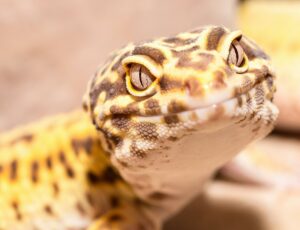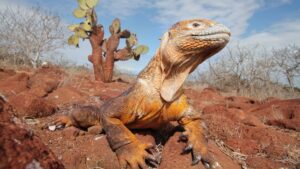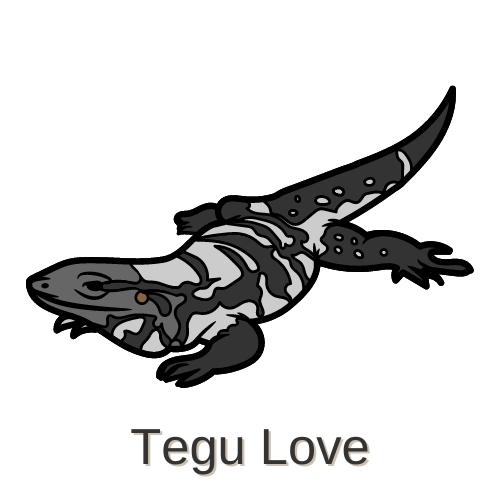Do you know the difference between a tegu and a monitor? If not, you’re in for a surprise! In this article, we will discuss the differences between these two types of lizards. Both tegus and monitors make great pets, but they have some key differences that you should be aware of before making your decision. We will cover everything from their habitats to their diets to help you decide which one is right for reptile owners!
Monitor Lizards and Tegus: A Quick Overview
Tegus are dogs and monitors are cats of the reptile world. Both monitors and tegus are large lizards that come from warm climates. Monitors can be found in Africa, Asia, and Australia, while tegus are native to South America. Both species can grow to be over four feet long, although the average size is closer to three feet.

Tegus are generally more docile than monitors, but both can be aggressive if they feel threatened. Both species require a large enclosure and should not be handled too much, as they can become stressed.
Differences Between Monitor And Tegu Lizards
Now that we’ve covered some of the basics, let’s take a closer look at the differences between these two types of lizards.
See More: Everything To Know About The Tegu Lizard
Habitat
Monitors are found in a variety of habitats, including rainforests, deserts, and swamps. They prefer to live in trees or burrows and can be found near water sources. Tegus, on the other hand, are terrestrial lizards that prefer to live in dry habitats such as grasslands and woodlands.
Diet
Monitors are carnivores that eat a variety of small animals, including insects, rodents, and reptiles. They will also eat fruit and vegetables on occasion. Tegus are omnivores and eat a wide range of items, including insects, small reptiles, fruits, vegetables, and even small mammals.
Size
Monitors are typically larger than tegus. The largest monitor species can grow to be over seven feet long, while the largest tegu species is only four feet long.
Aggression
Tegus are generally less aggressive than monitors. However, both species can be aggressive if they feel threatened. If you are considering either of these lizards as a pet, be sure to do your research and choose a reputable breeder to avoid getting an aggressive animal.
See More: Blue Tegu Lizard: A Beginner’s Guide
These are just some of the differences between monitors and tegus. Both make great pets, but it’s important to choose the right one for you. If you have any questions, be sure to ask your reptile veterinarian or breeder for more information.

The Savannah Monitor As A Pet
The Savannah monitor is a subspecies of the common monitor lizard. It is native to Africa and can be found in a variety of habitats, including rainforests, deserts, and swamps. The Savannah monitor grows to be about four feet long and is considered to be semi-aggressive.
The Savannah monitor is a popular pet due to its size and docile nature. However, it is important to note that this lizard can be a bit nippy and may not do well with small children.
See More: The Ultimate Tegu Diet Guide: Food & Feeding Schedule
The Savannah monitor requires a large enclosure and should be provided with plenty of hiding places. This lizard also needs a warm basking spot and access to UVB lighting. The Savannah monitor diet consists of insects, rodents, and reptiles.
The Savannah monitor is a great pet for those who are looking for a larger lizard. However, it is important to do your research before getting one as they can be nippy and require a lot of care.
The Argentine Tegus As A Pet
The Argentine tegu is a large lizard that is native to South America. It grows to be about four feet long and prefers to live in dry habitats such as grasslands and woodlands. The Argentine tegu is an omnivore and eats a wide range of items, including insects, small reptiles, fruits, vegetables, and even small mammals.
The Argentine tegu is a popular pet due to its docile nature and ability to bond with humans. However, it is important to note that this lizard can be a bit nippy and may not do well with small children.
See More: Red Tegu Lizard: A Beginner’s Guide
The Argentine tegu requires a large enclosure and should be provided with plenty of hiding places. This lizard also needs a warm basking spot and access to UVB lighting. The Argentine tegu diet consists of insects, small reptiles, fruits, vegetables, and even small mammals.

Argentine Tegus VS Savannah Monitors
The Argentine tegu and the Savannah monitor are both large lizards that make great pets. However, there are some important differences to consider before choosing one of these lizards as a pet.
See More: Does A Tegu Lizard Bite?
The Argentine tegu is native to South America while the Savannah monitor is native to Africa. The Argentine tegu grows to be about four feet long while the Savannah monitor grows to be about four feet long. The Argentine tegu is an omnivore and the Savannah monitor is a carnivore. The Argentine tegu requires a large enclosure and the Savannah monitor requires a large enclosure. The Argentine tegu diet consists of insects, small reptiles, fruits, vegetables, and even small mammals while the Savannah monitor diet consists of insects, rodents, and reptiles.
Final Words
Both the Argentine tegu and the Savannah monitor make great pets. However, it is important for pet owners to do their research before getting one of these lizards as they can be nippy and require a lot of care. Choose the right lizard for you based on your lifestyle and preferences. Overall they’re both very rewarding pets if you can fully provide for/understand them.














